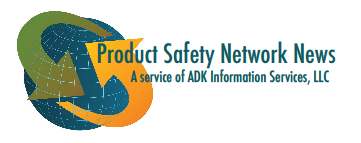CPSC Reaction to Consumer Misuse – Human Factors Design Process
April 19, 2018, Retail Consumer Products Law (Crowell & Moring)
Product liability suits and regulatory product defect enforcement actions associated with consumer foreseeable – and unforeseeable – misuse have become the norm. Consumer product companies can mitigate these risks by focusing on use-related hazards and user-centered designs in an effort to reduce injuries and improve the usability of products. But the real question is how far to go with these efforts — at what cost and for what incremental benefit.
CPSC Releases Revised Draft Age Appropriate Guidelines for Consumer Products
April 2, 2018, Consumer Protection Connection (Keller & Heckman LLP)
The U.S. Consumer Product Safety Commission (CPSC) announced potential changes to its 2002 Age Determination Guidelines Relating Children’s Ages to Toy Characteristics and Play Behavior (2002 Guidelines). The new draft guidance, titled Guidelines for Determining Age Appropriateness of Toys (Draft 2018 Guidelines), “addresses toys that have come onto the market since the last update and provides changes to the recommended age group for certain classic toys.”
Chemical Compliance: Deadline Looms for Prop 65
April 20, 2018, Chemical Processing
In just a few short months, on August 30, 2018, the California Office of Environmental Health Hazard Assessment (OEHHA) revisions to its Proposition 65 (Prop 65) Article 6 “clear and reasonable warnings” regulations will come into force. By then, companies must be compliant with the revised regulations for consumer product, occupational and environmental exposures. Companies must change the warning language to state that the product “can expose you” to the Prop 65 chemical; reference OEHHA’s new website, www.P65Warnings.ca.gov/product; and identify the name of one or more of the listed chemicals requiring the warning.
Opinion: States are doing what Scott Puitt won’t
April 22, 2018, The New York Times
Federal action on chemicals seems to be slowing, even as the number we encounter daily grows. With the Trump administration seemingly getting the federal government out of the business of cleaning up the environment, states will have to show the way. Before President Trump was elected, Massachusetts, California and Maine led the charge, regulating certain toxic substances that the federal government had let slip by. Now Washington State has moved to the fore in this fight.
Vermont Governor Vetoes Toxics Bill But Senate Overrides
April 20, 2018, wmac.org
The Vermont Senate overrode Governor Phil Scott’s first veto of the session. The Republican nixed a bill that would regulate toxic materials. As WAMC’s North Country Bureau Chief Pat Bradley reports, Senate sponsors were rankled over the governor’s move, but industry lobbyists agreed with the governor that the bill is unnecessary.
Wrap up of federal and state chemical regulatory developments, April, 2018
April 18, 2018,, JDSupra (Bergeson & Campbell)
EPA Issues Draft Guidance On Expanded Access To Confidential Business Information: On March 16, 2018, the U.S. Environmental Protection Agency (EPA) released three draft guidance documents for public comment clarifying the circumstances under which EPA may disclose Toxic Substances Control Act (TSCA) confidential business information (CBI) with an expanded set of people. 83 Fed. Reg. 17748.
A Blueprint for effective product recall
April, 2019, Furniture News
March saw the eagerly-awaited launch of the latest Publicly Accessible Specification (PAS), 7100: 2018. Published by National Standards Body BSI, it’s the result of the work undertaken by the Working Group on Product Recalls and Safety (WGPRS), the PAS Steering group and associated research into the need for corrective action planning and the issue and effectiveness of the public recall of consumer products.
CPSC Takes Smart Tech Safety to the Streets
April 19, 2018, Lexology (Baker and Hostetler)
The Consumer Product Safety Commission (CPSC) has had the “internet of things” on its mind for some time now. Back in January 2017, it released a wide-ranging report, titled “Potential Hazards Associated with Emerging and Future Technologies,” that dealt with the broad sweep of emerging consumer products and technologies and the hazards that may be associated with them. A new major development in the CPSC’s engagement with the “Internet of Things” is an upcoming hearing, scheduled for May 16, 2018, in Bethesda, Maryland.
SC Johnson Sets a New Standard in Transparency
April 19, 2018, Pilot on Line
SC Johnson released its 26th annual Sustainability Report, The Science Inside, which
shares publicly the criteria inside the company’s GreenlistT ingredient selection program. The GreenlistT program helps the company continually improve its products by choosing ingredients to better protect human health and the environment.
Porsche exec arrested over Volkswagen’s ‘Dieselgate’
April 20, 2018, Money/CNN
Police have arrested a senior manager at Porsche in Germany in connection with an investigation into diesel emissions rigging at Volkswagen. Porsche, along with brands such as Audi, Skoda and Lamborghini, is part of the Volkswagen Group (VLKAY). Prosecutors said the executive was arrested and remanded in custody because police feared he might flee or suppress evidence. He has not yet been charged.
UL and the Release of a Battery Safety Standard for the UAV Industry
April 19, 2018, Commercial UAV News
With the use of unmanned aerial vehicles (UAV) growing exponentially for commercial use, the need for safe batteries and electrical systems is growing, as well. To address these safety concerns, UL (https://www.ul.com/drones) created a new standard – UL 3030 to help ensure the safety of Li-ion batteries used in UAVs. Certification to UL 3030 allows manufacturers to demonstrate to regulators and other interested parties that a specific UAV has been evaluated to a third-party safety standard.


